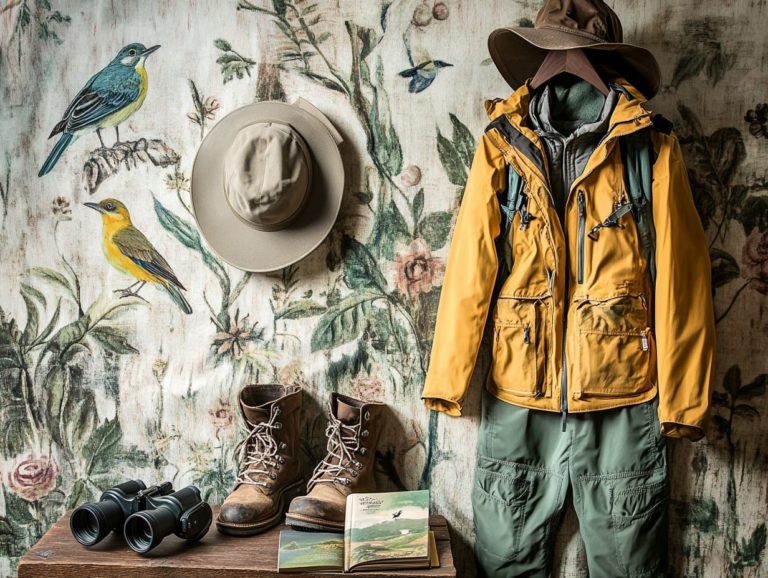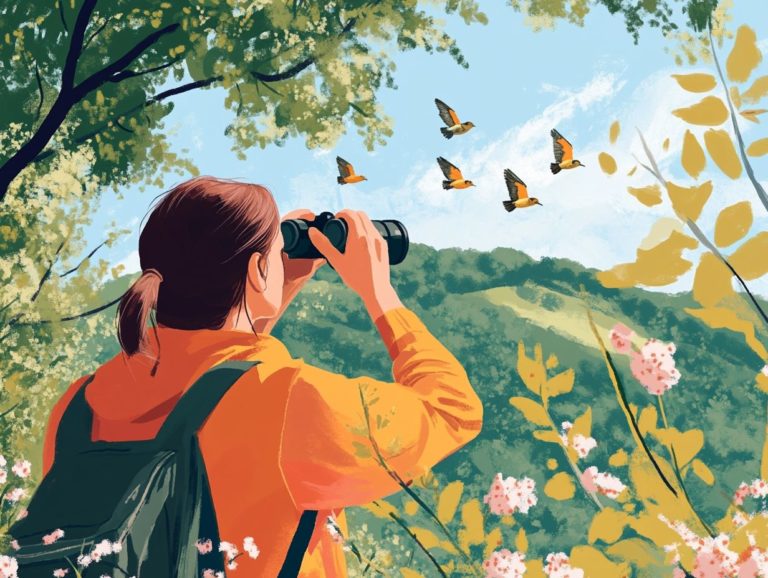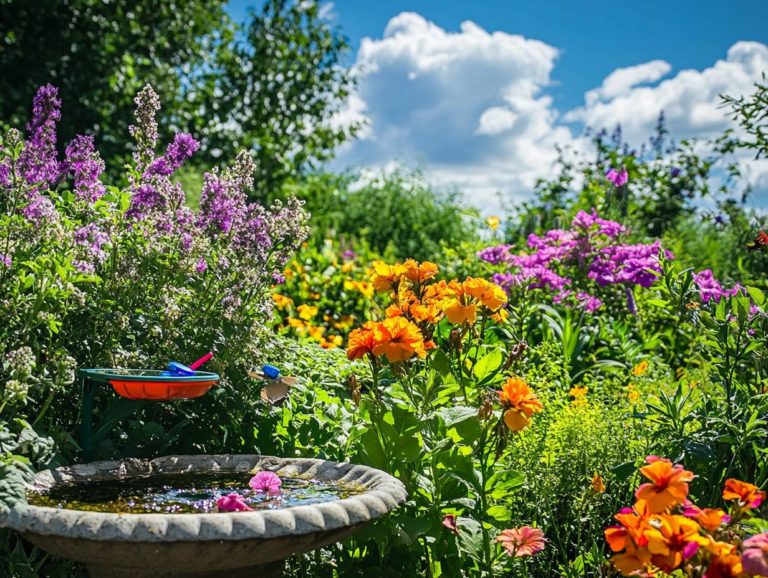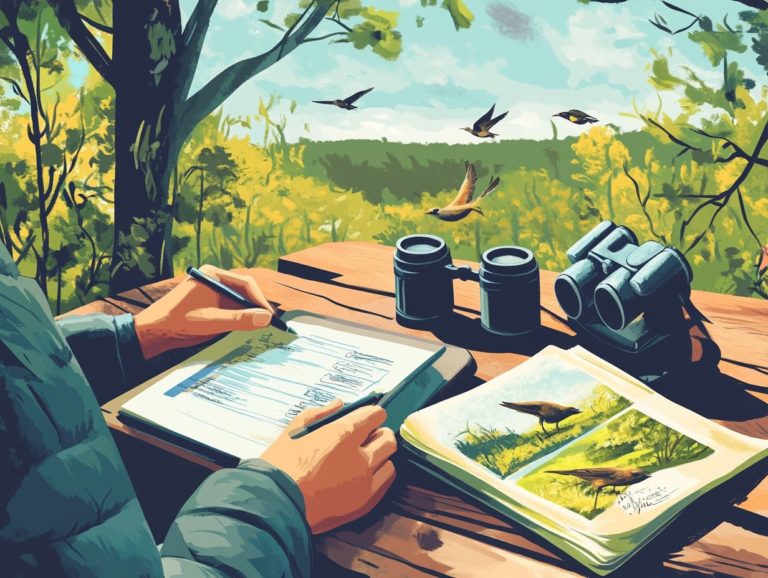How Can I Encourage More Birds to Visit My Garden?
Contents
- Key Takeaways:
- Why Attract Birds to Your Garden?
- Creating a Bird-Friendly Environment
- Types of Birds to Attract
- Attracting Birds with Food and Water
- Other Ways to Attract Birds
- Troubleshooting Common Problems
- Your Top Birding Questions Answered!
- How Can I Attract More Birds to My Garden?
- What types of birdhouses are best for attracting birds to my garden?
- How often should I change the food in my bird feeders?
- What are some common mistakes people make when trying to attract birds to their garden?
- Do I need a large garden to attract birds?
- What can I do to make my garden more appealing to migrating birds?
Key Takeaways:
- Providing a bird-friendly environment in your garden has many benefits, including maintaining a healthy ecosystem and adding beauty and tranquility to your outdoor space.
- Incorporate essential elements like water sources, shelter, and diverse plants to attract various bird species.
- Offer the right types of food and feeders, and provide nesting materials to encourage more birds to visit.
Why Attract Birds to Your Garden?
Bird-friendly gardens serve as vital habitats for wildlife, attracting a range of common birds and seasonal visitors. Beyond their beauty, these gardens offer numerous ecological benefits, bringing nature closer to home.
Key elements like native plants, vibrant flowers, and food sources such as bird feeders and baths create a diverse landscape that supports the well-being of birds and other wildlife. This transforms your gardening experience into a lively ecosystem full of birds!
Benefits for Your Garden and Environment
The benefits of a bird-friendly garden include a greater variety of plants and animals in your surroundings. By incorporating native and diverse plants, you create better habitats that attract a wider range of bird species.
A variety of plants also aids in natural pest control by providing homes for beneficial insects. Native flowers improve pollination, benefiting both birds and the overall wildlife ecosystem.
Creating a Bird-Friendly Environment
Creating a bird-friendly environment in your backyard is essential for supporting local wildlife. Native plants, which naturally grow in your area, allow you to cultivate a diverse range of flora that offers natural food and shelter.
This approach includes planting trees and incorporating native shrubs that provide nesting sites. Ultimately, this leads to a sustainable wildlife garden that attracts seasonal visitors.
Essential Elements for Attracting Birds
The proper use of feeders, baths, and nesting materials creates an inviting environment for birds by catering to their diverse needs. There are three types of feeders to consider:
- Tube Feeders: Tall, vertical tubes with small perches designed for small songbirds like finches and chickadees. The narrow openings keep seeds dry and protect them from larger birds.
- Platform Feeders: Open trays that allow seeds to be accessed by ground-feeding birds such as doves and sparrows. A cover can protect seeds from rain.
- Suet Feeders: Mesh bags or cages that hold solidified animal fat (suet) for insectivorous birds like woodpeckers and warblers.
Bird baths come in various styles, providing water for drinking and areas for birds to bathe. This is especially important in winter, as birds need to remove ice and snow from their feathers. A simple shallow dish works well, and heated bird baths ensure water is available during colder months.
Providing various nesting materials, like twigs and grass clippings, encourages birds to build their nests on your property. Regularly filling feeders with high-quality seed blends or suet enhances your birdwatching experience by attracting a wider variety of species throughout the year.
Types of Birds to Attract
Creating a garden that attracts a variety of bird species can transform your outdoor space into a vibrant habitat for bird watching and enjoyment throughout the year.
It’s essential to know which common birds visit gardens in your area, such as finches, cardinals, blue jays, and sparrows. This knowledge helps tailor your bird-friendly garden to meet their needs.
Seasonal changes influence the types of birds drawn to your garden. Adjust your feeding stations and garden features accordingly.
Common Species and Their Preferences
Understanding the common bird species that visit your backyard is essential for creating an environment that meets their unique feeding habits and nesting needs. Learn about the preferences of various species, such as hummingbirds, which are drawn to nectar-producing flowers; blue jays, which enjoy peanuts and berries; and cardinals, which prefer seeds and fruit.
Installing feeding stations at different heights accommodates various species. Offering fresh water for drinking and bathing will further attract them. Using specific feeders for particular foods can help bring a variety of birds to your backyard. For example, using rock salt or thistle can entice goldfinches.
Imagine your garden buzzing with colorful birds! Creating a birdwatching paradise is within reach.
Attracting Birds with Food and Water
The most effective way to attract birds is by providing appropriate food and water sources. This transforms your garden into a welcoming destination for many bird species.
Installing bird feeders stocked with different types of bird food can significantly enhance your chances of attracting both local birds and seasonal visitors.
A water source, such as a bird bath, offers birds a place to drink and bathe, making your garden even more appealing.
Best Foods and Feeders for Different Birds
Selecting the appropriate foods and feeders for various bird species is essential for creating a welcome environment in your garden. This enhances backyard birdwatching.
Different types of bird feeders, including tube feeders, platform feeders, and specialized hummingbird feeders, are designed to cater to the feeding preferences of specific birds. Tube feeders, ideal for smaller songbirds, can be filled with seeds like sunflower and safflower.
Platform feeders, being open dishes, attract a wider variety of birds and can accommodate a mix of seeds and fruits. Hanging a nectar feeder in a shaded area and filling it with a safe mix of sugar and water will attract hummingbirds.
By adopting organic gardening methods, you not only provide a healthier food source for wildlife, but you also contribute to a balanced ecosystem that benefits local fauna.
Other Ways to Attract Birds
There are several ways to attract birds to your garden beyond just providing food and water. Incorporating native plants, offering nesting materials, and creating shelter sources can benefit various species.
Plants, Nesting Materials, and Shelter
Planting a diverse range of native plants and installing birdhouses for nesting can significantly help many bird species thrive by creating a suitable habitat. Native plants, such as flowering dogwood and serviceberry, attract specific birds like warblers and finches, providing essential food and shelter.
Supplying organic materials, such as dried leaves, twigs, and natural fibers, is also important. These materials assist birds in building nests while contributing to an ecosystem with sustainable resources.
Birdhouses should be installed at the correct height and in appropriate locations. The entrance holes should be designed for the target species. Regular seasonal cleanings and inspections will maintain their structural integrity, ensuring a healthy environment for birds.
Troubleshooting Common Problems
Creating a bird-friendly garden is both rewarding and challenging. It requires managing common pests and predators that may threaten your feathered visitors.
To ensure a safe environment for birds, maintain and clean feeders and nest boxes regularly. Providing winter cover and shelter can protect birds from extreme weather and predators, allowing them to thrive even in harsher conditions.
Get started on your birdwatching paradise now and enjoy the beauty of nature!
Dealing with Pests and Predators
Homeowners face the challenges of pests and predators when trying to create a safe and inviting bird-friendly yard. Managing these nuisances well can be achieved through simple solutions, such as using bins designed to keep raccoons from accessing birdseed.
To deter natural predators like cats and hawks, birdhouses should be placed in locations with dense plant cover. Regular maintenance of feeders and cleaning of birdhouses will prevent pests from breeding and keep bird areas healthier, thereby reducing the risk of disease.
Your Top Birding Questions Answered!
How Can I Attract More Birds to My Garden?
There are several ways to attract more birds to your garden:
- Providing a variety of food sources, such as seeds, fruits, and nectar, will attract different types of birds.
- Installing a bird bath or fountain will provide a water source for birds to drink and bathe in.
- Planting native flowers, shrubs, and trees will attract birds with their natural food sources and nesting sites.
- Keeping your garden free of pesticides will ensure a safe environment for birds to visit.
- Adding bird feeders and feeders that hold a high-fat food for birds in different locations around your garden will give birds more places to perch and feed.
- Providing shelter, such as birdhouses and brush piles, will give birds a place to rest and hide from predators.
What types of birdhouses are best for attracting birds to my garden?
Different bird species have different preferences for nesting sites. Some prefer open, platform-style houses, while others prefer enclosed houses with small entrances. Do some research on the types of birds you want to attract and choose a birdhouse that will meet their specific needs.
How often should I change the food in my bird feeders?
Keep your bird feeders fresh and inviting by cleaning and refilling them regularly! Depending on the type of food, you may need to change it every 2-3 days or once a week. Keep an eye on the feeders and refill them as needed.
What are some common mistakes people make when trying to attract birds to their garden?
Some common mistakes include using pesticides, providing only one type of food, not keeping bird feeders clean, and not offering a water source. Another mistake is not planting native species, which may not attract the types of birds that live in your area.
Do I need a large garden to attract birds?
No, you don’t need a large garden to attract birds. Even a small balcony or backyard can be a haven for birds if you provide the right food, water, and shelter. Just make sure to keep the space clean and free of harmful chemicals.
What can I do to make my garden more appealing to migrating birds?
To attract migrating birds, it’s important to have a variety of food sources and shelter options available. You can also offer nesting materials and keep your bird feeders filled during their migration period. Planting native species that provide food and shelter can also be attractive to migrating birds.
Start creating your bird-friendly space today and enjoy the beauty of nature right in your garden!





